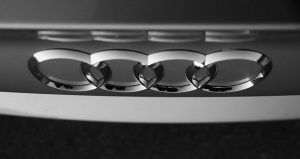Navigating PCP Claims: Mastering Wear and Tear Assessment in UK Leasing
When concluding a Personal Contract Purchase (PCP) agreement in the UK, understanding 'fair wea…….

When concluding a Personal Contract Purchase (PCP) agreement in the UK, understanding 'fair wear and tear' is crucial for successful PCP claims UK. The British Vehicle Leasing & Fleet Operations (BVLFO) provides definitive guidelines that dictate what is considered acceptable wear and tear within PCP agreements. These guidelines help avoid disputes when settling contracts by aligning expectations between lessees and lessors. Lessees must keep detailed records, adhere to the manufacturer's maintenance schedule, and document the vehicle's condition upon delivery and return, supported by high-resolution photos and service records. The Financial Conduct Authority (FCA) sets out standards for acceptable wear and tear, which include minor cosmetic damage like scratches and routine tire degradation. By managing wear and tear proactively and understanding PCP claim requirements, lessees can navigate the claims process effectively, ensuring a fair settlement and minimizing financial strain at the end of the contract term. Additionally, the adoption of PCP agreements is growing in the UK's healthcare sector, offering patients a flexible financing solution for expensive treatments through PCP claims UK, as evidenced by real-life case studies.
Navigating the intricacies of Personal Contract Purchase (PCP) agreements can be a pivotal aspect of car ownership in the UK. As drivers approach the end of their PCP terms, understanding ‘wear and tear’ within these contracts becomes crucial for a smooth handover or settlement. This article delves into the nuances of wear and tear in PCP agreements, offering clarity on how the British Vehicle Leasing & Fleet Operations (BVLFO) guidelines influence PCP claims in the UK context. From assessing vehicle condition to resolving claims accurately, we explore practical approaches to ensure motorists can manage their PCP agreements effectively. Join us as we examine case studies and provide expert advice to safeguard your interests when concluding a PCP claim.
- Understanding Wear and Tear in PCP Agreements within the UK Context
- The Role of the British Vehicle Leasing & Fleet Operations BVLFO Guidelines in PCP Claims
- Navigating PCP Claims: How to Assess and Report Vehicle Wear and Tear Accurately
- Case Studies: Real-life Examples of Successful PCP Claim Resolutions
- Expert Tips for Motorists on Managing Wear and Tear in Personal Contract Purchases (PCPs)
Understanding Wear and Tear in PCP Agreements within the UK Context

In the UK, Personal Contract Purchase (PCP) agreements have become a popular option for those looking to finance a new car. A key aspect of these agreements is the understanding and management of wear and tear, which can significantly impact the final settlement figure at the end of the contract term. Wear and tear within PCP agreements refers to the inevitable deterioration that occurs with a vehicle during its lease period due to normal use. It’s important for consumers to be aware of what is considered ‘fair wear and tear’ under their PCP agreement, as this will affect their potential PCP claims UK. The finance company will assess the car at the end of the contract, comparing its condition against industry guidelines, often outlined in British Standard (BSAU) 10129 or similar codes of practice. If the vehicle exceeds these standards, the customer may be liable for additional charges at the point of settlement. Therefore, it’s crucial to maintain thorough records and adhere to recommended maintenance schedules throughout the PCP term to ensure that any end-of-contract claims process goes as smoothly as possible, minimizing the potential for additional financial obligations. Consumers should also familiarize themselves with their PCP agreement terms regarding mileage and fair wear and tear to avoid complications or disputes when returning the vehicle. Understanding these factors can help drivers make informed decisions and manage their finances effectively, ultimately leading to a successful end-of-contract experience and potentially avoiding costly PCP claims.
The Role of the British Vehicle Leasing & Fleet Operations BVLFO Guidelines in PCP Claims

Within the context of Personal Contract Purchase (PCP) agreements in the UK, the British Vehicle Leasing & Fleet Operations (BVLFO) guidelines play a pivotal role in delineating standards for wear and tear. These comprehensive guidelines serve as a benchmark for motorists and financiers to understand what level of deterioration is considered reasonable during the term of a PCP agreement. Adherence to these standards is crucial for claimants filing PCP claims, as they provide clarity on the expectations for vehicle condition upon return or at the end of the contract. The BVLFO guidelines address various aspects of vehicle condition, including both exterior and interior elements, ensuring that both parties in a PCP agreement have a shared understanding of what ‘fair wear and tear’ entails. This not only streamlines the process of PCP claims UK but also aids in mitigating disputes that may arise at the conclusion of a lease term. By referencing these guidelines, claimants can substantiate their cases, leading to fairer outcomes for all parties involved in PCP agreements. The BVLFO’s role is instrumental in maintaining transparency and trust within the automotive finance sector, thereby facilitating a smoother process for PCP claimants navigating the end of their contracts.
Navigating PCP Claims: How to Assess and Report Vehicle Wear and Tear Accurately

In the context of Personal Contract Purchase (PCP) agreements, accurately assessing and reporting vehicle wear and tear is crucial for both the lessor and the lessee. When a lease term concludes, the condition of the vehicle becomes a focal point in the settlement process of PCP claims in the UK. The lessee must return the vehicle with fair wear and tear in mind; this means damage that can typically be expected from regular use over the contract period. It’s imperative to document the vehicle’s initial state at the outset of the agreement, as this serves as a benchmark against which final condition is measured. The Financial Conduct Authority (FCA) provides guidelines for what constitutes acceptable wear and tear, which includes minor scratches, dents, and wear on tyres and trim. Lessees should take detailed photographs upon delivery and at the end of the contract to substantiate their claims. Moreover, maintaining service records and adhering to the manufacturer’s maintenance schedule can bolster a lessee’s position during the PCP claim process. Misjudgments regarding wear and tear can lead to disputes with financiers, potentially resulting in additional charges or even compromising the settlement of the agreement. Therefore, understanding the nuances of what is considered normal wear and tear within the framework of PCP claims UK is essential for a fair resolution upon contract completion. Lessees should engage with their providers early in the process to clarify any uncertainties and ensure all parties are aligned on the expectations for vehicle condition at the end of the lease term.
Case Studies: Real-life Examples of Successful PCP Claim Resolutions

Within the UK’s private healthcare sector, PCP, or Personal Contract Purchase, agreements have become increasingly popular for financing high-value medical treatments. These financial arrangements allow individuals to spread the cost of care over time, often for procedures not typically covered by traditional health insurance. The success of PCP claim resolutions is evident when examining real-life case studies. For instance, a patient required advanced dental work that was outside the scope of their standard dental plan. Through a PCP agreement tailored to this specific treatment, the patient successfully underwent the procedure without the immediate financial burden. Another example involves a patient who, due to a congenital condition, needed regular and costly physiotherapy sessions. A PCP claim facilitated these treatments, leading to a marked improvement in the patient’s quality of life. These case studies demonstrate the practical application of PCP agreements in the UK, highlighting their effectiveness in resolving healthcare needs without the immediate outlay that traditional payment methods demand. By providing flexible financing options for medical treatments, PCP claims UK have proven to be a valuable resource for patients seeking high-quality care.
Expert Tips for Motorists on Managing Wear and Tear in Personal Contract Purchases (PCPs)

When navigating the terms of a Personal Contract Purchase (PCP), understanding how to manage wear and tear is crucial for maintaining the value of your vehicle and ensuring smooth handover at the end of your agreement. To safeguard against excessive wear and tear, begin by following the manufacturer’s maintenance schedule diligently. Regular servicing not only prolongs the life of your car but also provides a detailed record that can support your PCP claims UK if disputes arise regarding vehicle condition upon return or purchase.
At the commencement of your PCP agreement, it’s advisable to take high-resolution photographs of every part of the car, noting dates and mileage for future reference. This visual documentation can serve as a powerful tool when submitting PCP claims UK, offering clarity on the vehicle’s condition at the start of the contract. Throughout your agreement, keep detailed records of all maintenance work, including repairs, services, and any damage incurred, along with corresponding receipts. These records will substantiate your PCP claim should you face discrepancies when returning the vehicle. By proactively managing wear and tear, you can ensure a fair settlement at the end of your PCP agreement, safeguarding your financial interests and facilitating an easier transition to your next vehicle.
When navigating the complexities of Personal Contract Purchase (PCP) agreements in the UK, understanding wear and tear is paramount. The British Vehicle Leasing & Fleet Operations BVLFO guidelines provide a robust framework for assessing vehicle condition at the end of a contract, ensuring that claims are handled fairly and consistently. This article has illuminated the intricacies of PCP claims within the UK context, offering practical advice and real-life examples to guide motorists through the process accurately. By adhering to these guidelines and expert tips, drivers can manage wear and tear effectively, leading to successful PCP claim resolutions. As you conclude your journey through this article, remember that knowledge is power, particularly when it comes to PCP claims in the UK, where clarity and precision are key to a satisfactory outcome.







